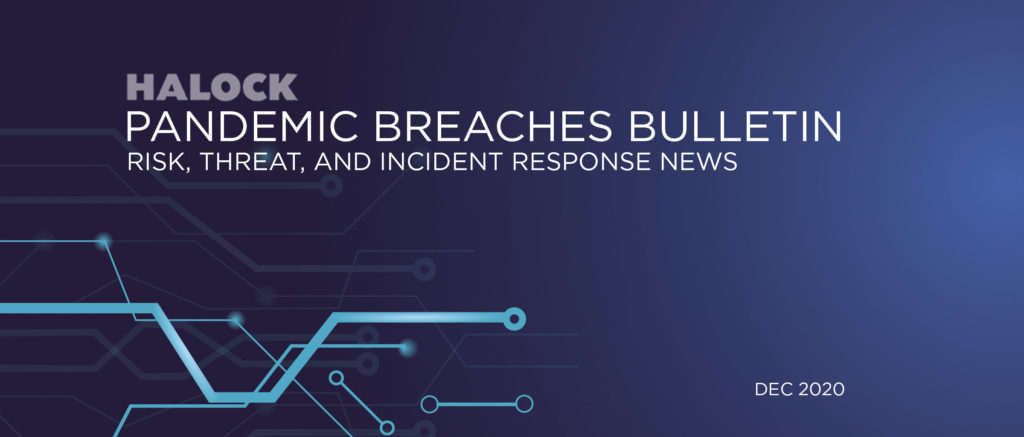Telerik UI breach warning, are your websites vulnerable?
Incident Summary: Attackers are leveraging Telerik UI vulnerabilities to attack websites that have not been adequately secured and protected resulting in system breaches with various objectives. The incidents HALOCK have been involved in has resulted in malware/ransomware, website defacement, credit card scraping, crypto mining, and data exfiltration. | |||
| DESCRIPTION | VULNERABILITY | ||
Telerik UI for ASP.NET AJAX is a widely used suite of UI components for web applications. It insecurely deserializes JSON objects in a manner that results in arbitrary remote code execution on the software’s underlying host. HALOCK has worked numerous incidents in 2020 related to this vulnerability that has resulted with the breach of web applications and have led to multiple different impacts to the organizations affected. In some of the incidents, the vulnerability was present in third party applications that were utilized within the companies’ web sites. | Progress Telerik UI for ASP.NET AJAX through version 2019.3.1023 contains a .NET deserialization vulnerability in the RadAsyncUpload function. This is exploitable when the encryption keys are known due to the presence of CVE-2017-11317 or CVE-2017-11357, or other means. Exploitation can result in remote code execution. https://labs.bishopfox.com/tech-blog/cve-2019-18935-remote-code-execution-in-telerik-ui | ||
| TESTING FOR THE VULNERABILITY | MITIGATING THE VULNERABILITY | ||
The vulnerability presence is detectable by the version of Telerik that is in place. Use the instructions located here to check and see if your version is vulnerable. HALOCK also recommends annual web application penetration tests on your web application to identify vulnerabilities and attack techniques that could successfully breach web applications. | The remediation for this vulnerability has been available since December of 2019. To mitigate this vulnerability:
Additional Controls that should be Implemented:
| ||
WHAT YOU SHOULD DO TO MITIGATE RISKS IN THESE TYPES OF ATTACKS
- Enhance your Incident Response Plan (IRP), Readiness, and Training to address Telerik UI vulnerabilities.
- Schedule an application penetration test on external web applications.
- Implement technology solutions such as web application firewall (WAF), file integrity monitoring, Security Event and Information Management (SEIM), and vulnerability scanning.
If you are not able to implement these controls, or need help understanding if you are susceptible to this attack, call HALOCK.
Review your security profile to mitigate your risks and minimize impact of a breach.

HALOCK Breach Bulletins
Recent data breaches to understand common threats and attacks that may impact you – featuring description, indicators of compromise (IoC), containment, and prevention.
References
- https://labs.bishopfox.com/tech-blog/cve-2019-18935-remote-code-execution-in-telerik-ui
- https://nvd.nist.gov/vuln/detail/CVE-2019-18935
- https://docs.telerik.com/devtools/aspnet-ajax/controls/asyncupload/security
- https://www.telerik.com/blogs/blue-mockingbird-vulnerability-telerik-guidance
- HALOCK forensic incidents

